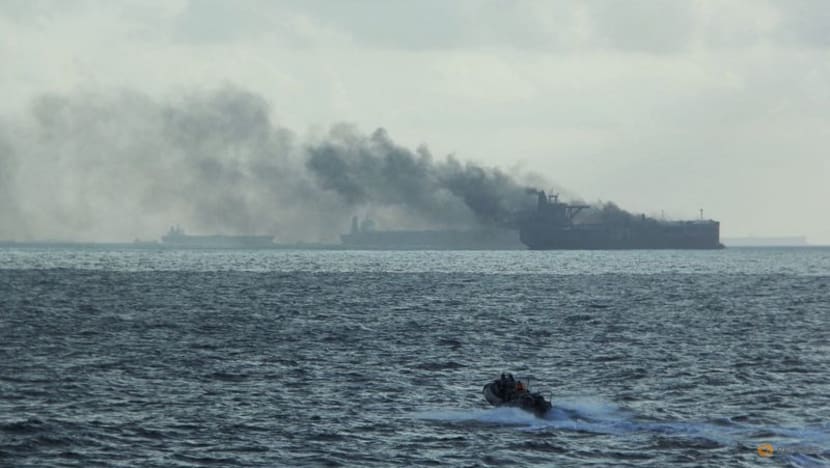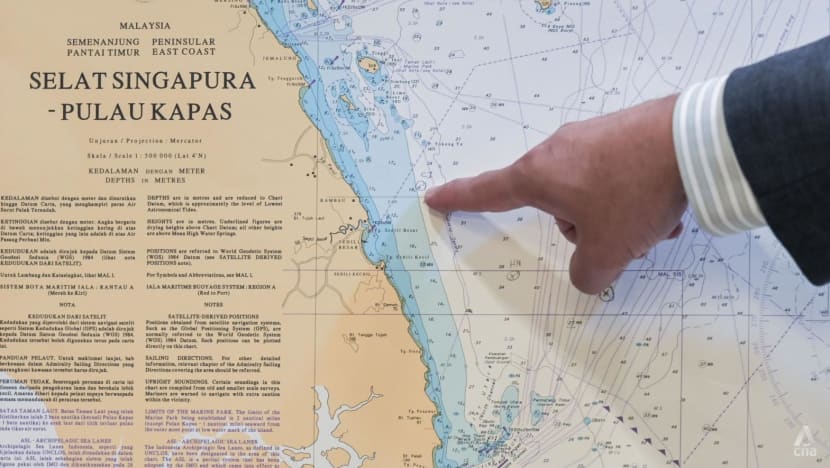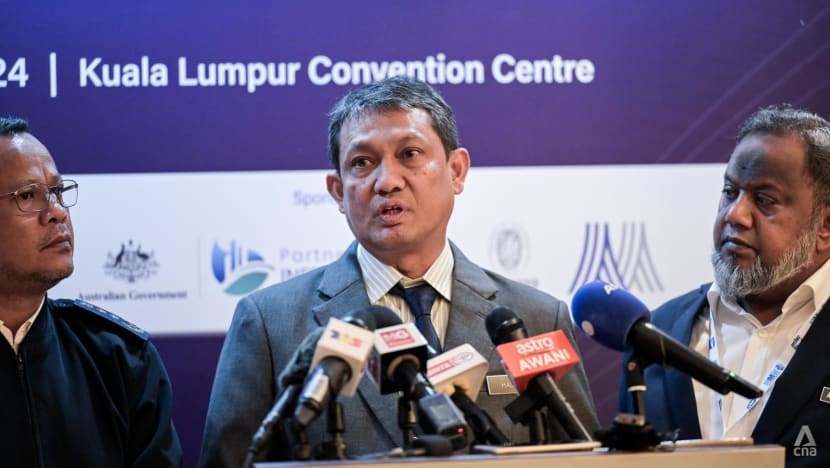Oil tanker in collision near Pedra Branca did not flee, but had drifted away: Malaysian authorities
The oil tanker Ceres I collided with Singapore-flagged Hafnia Nile on Jul 19. The Malaysian coast guard previously said it had illegally left the location of the collision and turned off its tracking system.

FILE PHOTO: A handout image shows the RSS Supreme's rigid-hulled inflatable boat in the vicinity of the burning vessels following a fire on two oil tankers about 55 km (34 miles) northeast of the Singaporean island of Pedra Branca, July 19, 2024. Republic of Singapore Navy/Handout via REUTERS/File Photo

This audio is generated by an AI tool.
KUALA LUMPUR: The oil tanker Ceres I, which collided about 55km northeast of Pedra Branca with the Singapore-flagged Hafnia Nile on Jul 19, did not flee the scene but had drifted away, Malaysian authorities claimed on Tuesday (Jul 30).
“As a result of the contact, both vessels caught fire and the anchor chain of the vessel Ceres I on the starboard side was cut off and subsequently caused the vessel Ceres I to drift,” said Director General of Malaysia's Marine Department Capt Mohamad Halim Ahmed at a press conference.
His latest comments contradict previous reports, which had quoted the Malaysian coast guard saying the Sao Tome and Principe-flagged Ceres I had illegally left the location of the collision and turned off its tracking system. It was found two days later along with two tugboats towing it.
Giving an update on the incident on Tuesday, Capt Halim said both ships are now anchored in Malaysian waters.
The Ceres I was eventually found 20 nautical miles from the collision site, not far from Pulau Tioman, a holiday island destination off the coast of Pahang.

“It didn’t try to run away but had communication and navigational issues,” he said when asked if the automatic identification system (AIS) data had been turned off by the Ceres I.
The AIS provides information on the identity and location of all ships.
The collision happened within Singapore’s maritime search and rescue region. The Hafnia Nile was moving at 14.2 knots when the collision happened, according to AIS data.
Capt Halim said preliminary investigations found that the Ceres I, which was carrying 26 crew members, was anchored due to technical problems, and the Hafnia Nile vessel could not avoid colliding with it.
“We do have some views on how the accident happened. It’s like one car was stationary and the other was moving. At the moment, we cannot disclose why it happened,” said Capt Halim.

The Hafnia Nile, a 228m-long and 32m-wide tanker, was carrying up to 60,000 metric tonnes of naphtha, a highly flammable mixture used to make petrochemicals, according to data from analytics firm Kpler.
It was on its way to Kashima, Japan, while the Ceres I was without cargo and on its way to Langshan, China.
Operated by China’s Shanghai Prosperity Ship Management, Ceres I is categorised as a very large crude carrier (VLCC) – among the biggest out there, and capable of carrying around two million barrels.
In the wake of the collision, a maritime analyst identified the Ceres I as a "serial spoofer", a term that refers to ships that deliberately manipulate AIS data to disguise their actual location.
Ceres I also discharged heavy Iranian crude in the waters off eastern Malaysia around June, according to maritime information service Lloyd's List Intelligence's principal analyst Michelle Wiese Bockmann.
“The area is well-known for storage and ship-to-ship transfers of sanctioned Iranian, Venezuelan and Russian oil destined for China,” she noted.
Iran’s Ministry of Petroleum has issued a statement saying the Ceres I was not carrying Iranian crude oil.
Asked if the authorities would investigate various allegations against Ceres I, Capt Halim said that the priority now is on the incident and the safety of the vessels.
“We haven’t come to (that) stage. The priority is to keep the vessels afloat, especially the Hafnia Nile,” he said, adding that Malaysia is working with Singapore authorities on this.
The initial investigation has detected no oil spill, only an oil sheen suspected to be caused by the Hafnia Nile.
“The salvor placed an oil boom around the Hafnia Nile vessel to control the situation. No oil spill from the Ceres I vessel was reported,” he said.
All 22 crew members of the Hafnia Nile were rescued by the Republic of Singapore Navy's RSS Supreme.
The Ceres I’s crew members are still on board the ship, Capt Halim said.















